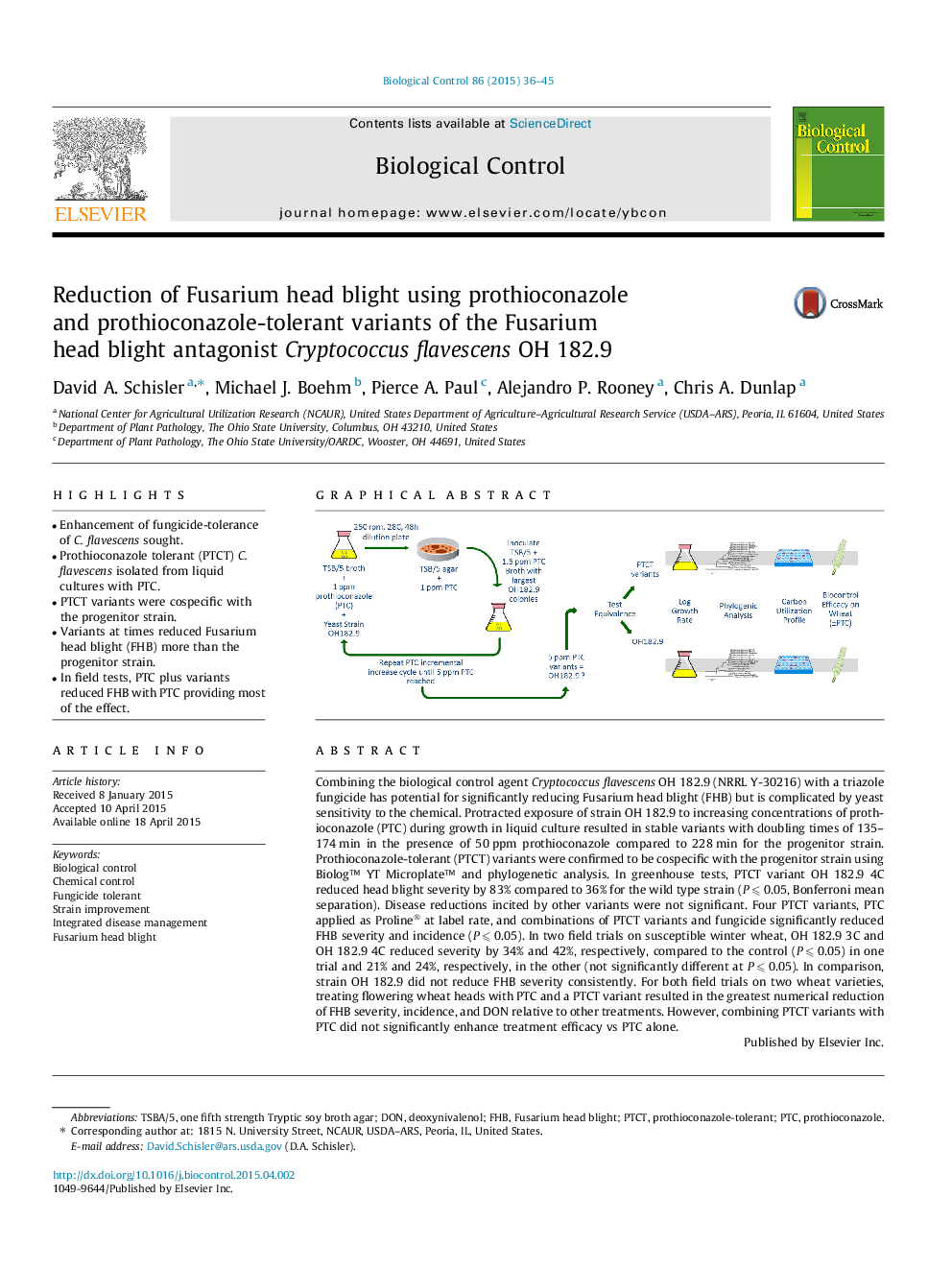| کد مقاله | کد نشریه | سال انتشار | مقاله انگلیسی | نسخه تمام متن |
|---|---|---|---|---|
| 4503759 | 1624248 | 2015 | 10 صفحه PDF | دانلود رایگان |

• Enhancement of fungicide-tolerance of C. flavescens sought.
• Prothioconazole tolerant (PTCT) C. flavescens isolated from liquid cultures with PTC.
• PTCT variants were cospecific with the progenitor strain.
• Variants at times reduced Fusarium head blight (FHB) more than the progenitor strain.
• In field tests, PTC plus variants reduced FHB with PTC providing most of the effect.
Combining the biological control agent Cryptococcus flavescens OH 182.9 (NRRL Y-30216) with a triazole fungicide has potential for significantly reducing Fusarium head blight (FHB) but is complicated by yeast sensitivity to the chemical. Protracted exposure of strain OH 182.9 to increasing concentrations of prothioconazole (PTC) during growth in liquid culture resulted in stable variants with doubling times of 135–174 min in the presence of 50 ppm prothioconazole compared to 228 min for the progenitor strain. Prothioconazole-tolerant (PTCT) variants were confirmed to be cospecific with the progenitor strain using Biolog™ YT Microplate™ and phylogenetic analysis. In greenhouse tests, PTCT variant OH 182.9 4C reduced head blight severity by 83% compared to 36% for the wild type strain (P ⩽ 0.05, Bonferroni mean separation). Disease reductions incited by other variants were not significant. Four PTCT variants, PTC applied as Proline® at label rate, and combinations of PTCT variants and fungicide significantly reduced FHB severity and incidence (P ⩽ 0.05). In two field trials on susceptible winter wheat, OH 182.9 3C and OH 182.9 4C reduced severity by 34% and 42%, respectively, compared to the control (P ⩽ 0.05) in one trial and 21% and 24%, respectively, in the other (not significantly different at P ⩽ 0.05). In comparison, strain OH 182.9 did not reduce FHB severity consistently. For both field trials on two wheat varieties, treating flowering wheat heads with PTC and a PTCT variant resulted in the greatest numerical reduction of FHB severity, incidence, and DON relative to other treatments. However, combining PTCT variants with PTC did not significantly enhance treatment efficacy vs PTC alone.
Figure optionsDownload as PowerPoint slide
Journal: Biological Control - Volume 86, July 2015, Pages 36–45